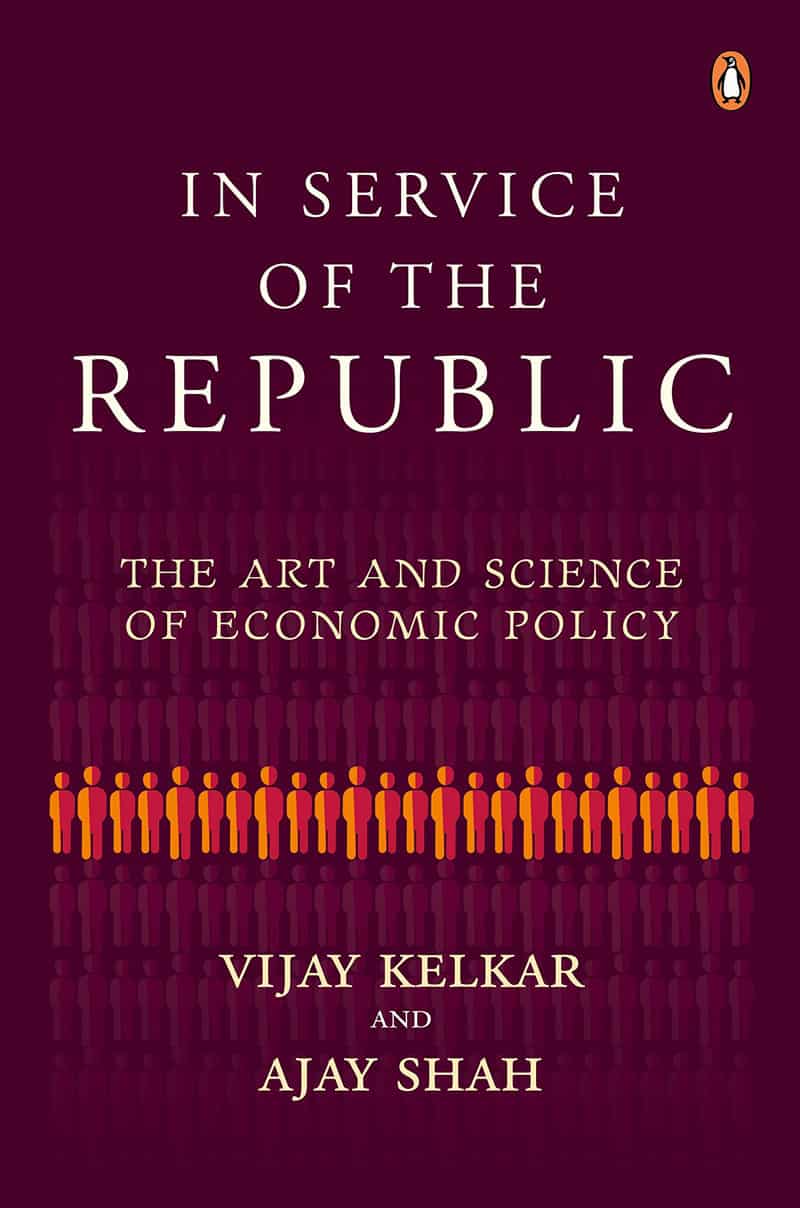In Service of the Republic offers many tips for getting the policymaking process right.
SUBJECT: 5/5
RELEVANCE: 4/5
WRITING STYLE: 5/5
The authors of this book are two seasoned economists who have been at the forefront of policymaking in India.
In Service of the Republic attempts to find answers to the question lingering in everyone’s mind – What happened to the rapid economic growth that the country saw in the decade up till 2011?
Where did things go wrong? And what does India need to do – in the authors’ own words – to get rich before we get old?
And the answers, needless to say, are not comforting. The authors draw on their extensive national as well as international experience to present many examples where good policy intent has often translated into sub-optimal policies and shoddy implementation.
It often defeats the objective of the policy-making exercise. What is comforting, however, is the authors’ faith that things need not necessarily be that way. A significant part of the book is devoted to providing guidance for sound policymaking.
Two exclusive sections are dedicated to the science as well as the art of public policymaking.
The book begins by explaining the purpose of a government. It explains that the justification for state intervention arises when there is a market failure.
The reader is confronted with the uncomfortable truth that all activities of the state are grounded in coercion. So, effective public policy must aim to channel the coercive power towards a common good.
The book goes on to explain many important points elaborated below:
- Four types of market failure – externalities, public goods, market power, and asymmetric information.
- The three levers of public policy – rules about behaviour, taxation, and spending.
- Four factors that influence the level of difficulty in policy implementation – transaction intensity, level of discretion, stakes involved, and the need for secrecy.
- Three alternatives for policy intervention – to produce, to regulate, or to finance.
The authors agree that policymaking is a slow and arduous process and that there are no quick wins. In Service of the Republic offers many tips for getting the policymaking process right.
Policymakers have to contend with many constraints. These include lack of information, inefficiencies in the state machinery, and short-term interests of the voter amongst others.
It is important to identify the market failure, to question whether the proposed policy intervention addresses the failure, and to assess the state’s capacity to implement the intervention.
Presented with policy intervention choices, the solution that least infringes upon the freedom of private persons must be preferred. The authors advise the Governments to guard against the ‘law of unintended consequences’, where policy actions produce adverse and often unexpected results.
Human behaviour often changes in response to policy changes, which makes it all the more difficult to define and pursue target outcomes.
The role of the ‘invisible infrastructure’ – the superset of laws, institutions, and accountability arrangements in the country – in the success of a specific policy intervention cannot be ignored.
The book envisages a seven-stage policy pipeline to understand the policymaking process.
The book also introduces a few first principles that ought to be at the back of the mind for policymakers:
- Assignment Principle – One policy instrument can be used for one objective.
- Subsidiarity Principle – A function is best performed at the lowest level of government it can be assigned to.
- Participatory Policymaking – Involve key stakeholders in the policymaking process.
The need for policymaking to be rooted in, what the authors call, ‘metis – deep experiential local knowledge’ is paramount.
The book also presents some startling facts. The authors estimate that the marginal cost of public funds (MCPF) in India is 3. This means that if the Government spends one rupee, the cost to the society is 3 rupees. This is because of poor implementation and inefficiencies in public expenditure.
A cost-benefit analysis, which might seem to be the natural thing to do to the average reader, is often neglected in the policymaking exercise.
The authors conclude that the four hardest pieces of public policy are the criminal justice system, the judiciary, the tax system, and financial regulation.
Regardless of the underlying public policy problem sought to be addressed, the authors strongly argue for consultations with groups most likely to be affected by the policy change and for the involvement of critics at every stage of the ideation process.
They suggest the importance of building an institutional culture in government. A culture that encourages data-driven decisions and accepts failure.
Towards the end, In Service of the Republic cites practical examples from the GST, healthcare, and financial-economic policy to substantiate its arguments.
The highlight of the book is that it appeals to the layman as much as it appeals to the seasoned administrator. The use of jargon is minimal and things are explained in a simple manner.
